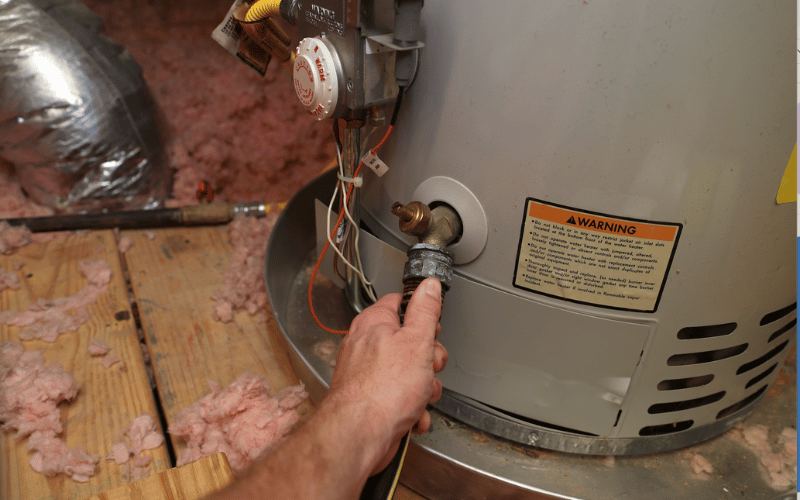Best Practices for Maintaining Your Home's Hot Water System
Best Practices for Maintaining Your Home's Hot Water System
Blog Article
On this page down the page you can locate a lot of brilliant data in relation to How to Maintain a Hot Water Heater in a Few Simple Steps.

Warm water is vital for day-to-day comfort, whether it's for a revitalizing shower or cleaning recipes. To ensure your hot water system runs effectively and lasts longer, normal upkeep is key. This short article gives functional suggestions and understandings on just how to preserve your home's hot water system to avoid disturbances and costly repair work.
Introduction
Keeping your home's hot water system could seem overwhelming, but with a few straightforward actions, you can guarantee it operates smoothly for many years to come. This overview covers every little thing from comprehending your hot water system to do it yourself upkeep pointers and understanding when to contact professional assistance.
Value of Maintaining Your Hot Water System
Normal upkeep not only extends the life expectancy of your hot water system however also ensures it runs successfully. Neglecting upkeep can lead to reduced effectiveness, higher energy expenses, and also early failing of the system.
Indications Your Warm Water System Requirements Maintenance
Knowing when your warm water system requires focus can prevent significant concerns. Look out for signs such as irregular water temperature, odd sounds from the heating system, or corroded water.
Flushing the Hot Water Heater
Purging your water heater eliminates debris buildup, boosting efficiency and extending its life.
Monitoring and Changing Anode Rods
Anode rods prevent rust inside the storage tank. Checking and replacing them when worn is critical.
Complex Concerns Requiring Expert Assistance
Instances consist of significant leaks, electrical troubles, or if your hot water heater is consistently underperforming.
Regular Expert Upkeep Conveniences
Professional maintenance can consist of extensive assessments, tune-ups, and making sure compliance with security standards.
Examining and Changing Temperature Settings
Readjusting the temperature level setups ensures optimum efficiency and safety.
Do It Yourself Tips for Upkeep
You can execute several maintenance jobs on your own to maintain your warm water system in top condition.
Looking for Leaks
Frequently check pipelines and links for leaks, as these can lead to water damages and greater expenses.
Understanding Your Hot Water System
Prior to diving right into upkeep tasks, it's valuable to understand the fundamental elements of your warm water system. Typically, this includes the water heater itself, pipelines, anode rods, and temperature level controls.
Regular Monthly Maintenance Tasks
Normal month-to-month checks can assist capture small problems prior to they rise.
Testing Pressure Alleviation Valves
Evaluating the stress safety valve guarantees it works appropriately and prevents excessive pressure build-up.
Shielding Pipelines
Shielding warm water pipelines reduces heat loss and can save energy.
When to Call an Expert
While DIY upkeep is beneficial, some problems require expert knowledge.
Final thought
Regular upkeep of your home's hot water system is necessary for effectiveness, longevity, and cost financial savings. By adhering to these suggestions and understanding when to seek specialist help, you can make certain a trustworthy supply of warm water without unexpected disruptions.
How to Maintain an Instant Hot Water Heater
Before tinkering with your hot water heater, make sure that it’s not powered on. You also have to turn off the main circuit breaker and shut off the main gas line to prevent accidents. Also turn off the water valves connected to your unit to prevent water from flowing into and out of the appliance. 2. When you’re done, you have to detach the purge valves’ caps. These look like the letter “T†and are situated on either side of the water valves. Doing so will release any pressure that has accumulated inside the valves while at the same time avoid hot water from shooting out and burning your skin. 3. When the purge valves’ caps are removed, you have to connect your hosing lines to the valves. Your unit should have come with three hoses but if it didn’t, you can purchase these things from any hardware or home repair shops. You can also get them from retail stores that sell water heating systems. Read the user’s manual and follow it to complete this task properly. When the hosing lines are connected, open the purge port’s valves. 4. You should never use harsh chemical cleaners or solutions when cleaning your unit. Make use of white vinegar instead. It should be undiluted and you’ll probably use about 2 gallons. 5. Now flush your water heater. This task should probably take about 40 minutes. We can’t give you specific directions for this because the procedure is carried out depending on the type, model and brand of your heater. With that being said, refer to the user’s manual. 6. When you’re done draining the unit, you have to turn off the purge port valves again. Remove the hosing lines that you earlier installed on each of the water valves. Put the valve caps (purge port) back in their respective places and be very careful so as not to damage the rubber discs that are found inside these caps. 7. Now that everything’s back in place, check your user’s manual again to find out how to reactivate your water heating system. 8. Once it is working, turn one of your hot water faucets on just to let air pass through the heater’s water supply pipes. Leave the tap on until water flows smoothly out of it. https://www.orrplumbing.com/blog/2014/september/how-to-maintain-an-instant-hot-water-heater/

I hope you liked our piece on How to Maintain a Hot Water Heater in a Few Simple Steps. Thank you so much for finding the time to read our blog. Appreciated our blog entry? Please quickly share it. Help other people check it out. I truly appreciate your readership.
This Resource Report this page